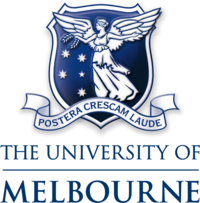
How do I become a urban planner?
Bachelor of Science (Geographical Science)
- There are no mandated entry requirements.



Master of Urban Design
- There are no mandated entry requirements.





Master of Planning
- There are no mandated entry requirements.





Master of Urban and Regional Planning
- There are no mandated entry requirements.




Graduate Diploma in Urban and Regional Planning
- There are no mandated entry requirements.




Graduate Diploma in Urban Design
- There are no mandated entry requirements.



Master of Urban Planning
- There are no mandated entry requirements.


Master of Sustainable Development
- There are no mandated entry requirements.


Master of City Planning
- There are no mandated entry requirements.
 University of New South Wales
University of New South Wales
Graduate Diploma in City Planning
- There are no mandated entry requirements.
 University of New South Wales
University of New South Wales
Related occupations
Planning Officer
A Planning Officer assesses development applications, conducts site inspections, prepares reports, and ensures projects meet regulations, balancing growth and sustainability.
Property Developer
A Property Developer acquires and improves properties, manages development projects, and coordinates sales while liaising with stakeholders.
Architect
Architects design various structures, from homes to commercial buildings, and engage in client meetings, feasibility studies, and project inspections.
Spatial Analyst
A Spatial Analyst analyses spatial data, generates maps, and collaborates on GIS projects for urban planning, environmental management, and disaster response.
Cartographer
Cartographers create maps and visual representations, using data and artistic skills to effectively communicate geographical information.
Architectural Designer
An Architectural Designer creates sustainable building designs, collaborating with clients and ensuring regulatory compliance.
Community Planner
A Community Planner develops land use and infrastructure plans, focusing on sustainability, consulting stakeholders, and guiding urban and rural community growth.
Geospatial Analyst
A Geospatial Analyst interprets spatial data using GIS and remote sensing to inform decisions in various sectors, creating maps and visualisations.
Geospatial Engineer
A Geospatial Engineer uses engineering principles and GIS technologies to collect and analyse geographic data for urban planning and infrastructure.
Urban Designer
An Urban Designer develops land use strategies to create functional, attractive urban environments by analysing trends and collaborating with stakeholders.
Infrastructure Planner
An Infrastructure Planner designs and implements plans for infrastructure projects, collaborating with stakeholders to ensure sustainable and efficient development.
Town Planner
A Town Planner designs land use plans to ensure sustainable community development while collaborating with stakeholders and adhering to regulations.
Transport Planner
A Transport Planner creates and implements strategies for efficient, safe transport systems by analysing data and collaborating on infrastructure projects.
Statutory Planner
A Statutory Planner ensures projects comply with planning regulations, evaluates applications, and liaises with stakeholders to facilitate approvals.
Planning Consultant
A Planning Consultant advises on land use and development, ensuring compliance with regulations and facilitating the planning process for projects.
Land Use Planner
A Land Use Planner designs land allocation for urban and rural areas, ensuring sustainable development and compliance with regulations while engaging stakeholders.
Common questions
How much does an Urban Planner earn?
In Australia, a full time Urban Planner generally earns $1,835 per week ($95,420 annual salary) before tax. This is a median figure for full-time employees and should be considered a guide only. As you gain more experience you can expect a potentially higher salary than people who are new to the industry.
What are the job opportunities for an Urban Planner?
There has been a strong increase in the number of people employed in this industry over the last five years. There are currently 18,800 people working as an Urban Planner in Australia and this number is expected to reach 21,400 by 2025. Urban Planners may find work across all regions of Australia.
Source: Australian Government Labour Market Insights
How do I become an Urban Planner?
A Bachelor of Urban and Regional Planning is an ideal qualification if you’re interested in a career as an Urban Planner. This course covers topics including urban analysis, planning and design practice, urban development law, land use planning, economics planning law, site planning, transport planning, urban design, property development, environmental planning and researching future built environments.
Further reading


How to start a career in community management
18th August 2020)

